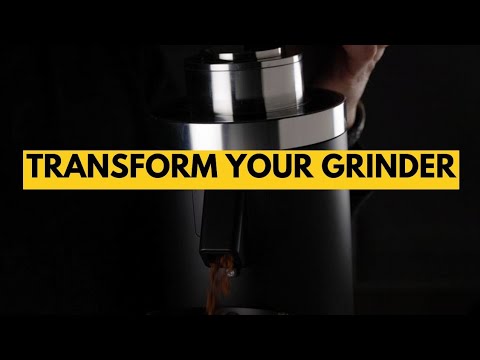My grinder (Timemore Chestnut) isn’t of the super fancy kind that won’t ever produce any fines. So after some initial skepticism about the video’s topic, I was intrigued and gave it a try. And oh boy, does it make for a change in the result: Where I would normally set the grinder to 14 clicks, now I’m at 9 (where lesser is finer) and the coffee is still more on the sour side.
With the Aeropress, I’m experimenting with longer brew times, no big deal. Overall, I think I’m getting a more even, more efficient extraction with more strength per gram of coffee without the harshness you get when grinding too fine.
But for pour over, I’m unsure if I should really go any finer. The bed already was sort of muddy the last time. Do you have any experience on the topic you’d like to share? Have you tried slow feeding, and if yes, are you still doing it, and are you doing it for everything or only certain brew methods?
Sounds like something I will try later today. 👍
I’m not sure I’m seeing or tasting a difference with this, but I’m only grinding like 11g to 15g. Maybe if I was doing like 30g or more it would help. I do enjoy dropping the beans a few at a time in the hopper.
Thanks for this! Will start slow feeding and see how it changes.
Based on the theory here, slow feeding doesn’t make the grounds finer, but actually overall coarser by reducing fines on the same grinder setting. So although you are adjusting to a lower number (finer setting) on your grinder, the actual particles are not finer, but more uniformly distributed. Bottom line: you should definitely try this for your pour overs!
Will try this weekend. Thanks for the rec
UPDATE: It was better
yes, I do slowfeed.
Regardless of the method & recipe? And do you now grind as much finer as I do?
Regardless of the method & recipe?
yes, as slow feeding makes the coffee more consistent in grain size.
And do you now grind as much finer as I do?
I cannot say for Timemore Chestnut, as I sold my C3 after I bought Turin DF64V, but after I started sprinkling water and slow feeding, I started grinding finer. I am using Gaggia Classic Pro with Gaggiuino.
My questions whether you do this with every method stems from that especially with espresso - or what I can do with an Aeropress to mimic it -, slow feeding takes significantly more time due to the fine grind size, and to my taste, the improvement is really insignificant compared to a more coarsely ground pour over. On the other hand, my espresso is little more than a concentrated regular Aeropress coffee, and the beans I have at hand for this particular variant are supermarket material, hence also less than ideal. Would be interesting to test what difference this makes with a portafilter.
To my understanding of the accompanying theory, the particle size distribution shouldn’t be as widespread on finer grind settings anyway, so that would also explain my experience.
Thanks anyway for sharing.
for electric grinders i saw some general advice that said you get more uneven grinding and popcorning with slow feed/last beans of a grind. so it was recommended to get your whole dose in at the same time. anti-popcorning mechanisms supposedly help with this
Interesting. That goes against what Lance says in the video, but doesn’t sound implausible. Though I wonder how you can grind any larger than the setting of your grinder. Also, to my understanding, with slow feeding you only produce less of those finer grinds that come from mushing the beans together when grinding the whole dose at once. As I don’t have a particle size analyser at home, I’m only guessing here, though. 😄
yeah it seems this would only be about distribution below the setting since the upper bound should be somehow gated by the burr gap plus slop (runout, flex under dynamic grinding forces, etc).
i reasoned that slow feeding made more fines since it creates more opportunities for the beans to hang out in the breaker section of the burrs without pressure behind them driving them into the cutting surfaces.
That sounds conclusive, too. After giving it some more thought, I believe larger parts might slip through that aren’t round but, like, cylindrical. No idea though if this does anything significant to the taste. Like always in science: Further research is required!





